Florentine Humanism in Triumph and in Conflict
Margo Weitzman
As the humanist revival of antiquity saturated Florence, elites hungered for Greek and Latin classics. Translations from Greek to Latin, and to vernacular Italian, made works like Homer’s epics available to new readers, and even to the illiterate who heard orations from the street and gossip from the palaces. Humanist culture was one of erudite tension as scholars engaged in fierce debates regarding Latin grammar and style. Feuds ranged in from treatises and translations, to personal missives publicly circulated.
Humanism also transformed Florentine art. Pagan narratives became frequent subjects, while classical realism dominated religious painting. Gold leaf backgrounds gave way to landscapes or architecture, and stylized figures to detailed bodies modeled on classical examples, including nudes.
Pagan literature and imagery had a complex reception among Church leaders. Some embraced humanism, founding the Vatican library and commissioning art replete with classical imagery. Others opposed humanism, leading to Inquisitorial investigations and condemnations of major scholars.
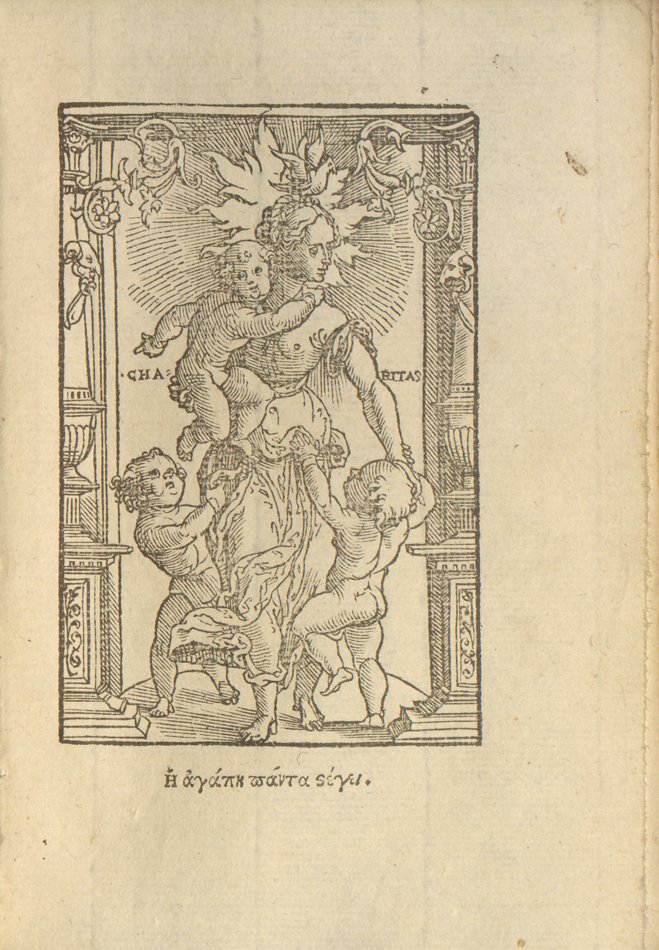
Homer
[Antwerp]: Excusa per Ioannem Grapheum, 1528
Rare Books Collection
As a compliment to Baccelli’s vernacular Italian translation, Valla’s complete works of Homer in Latin represents an earlier phase of translation practice. Valla’s translation from Greek to Latin preceded Baccelli’s from Latin to Italian. This volume was a model for proper, erudite Latin among humanists in Florence.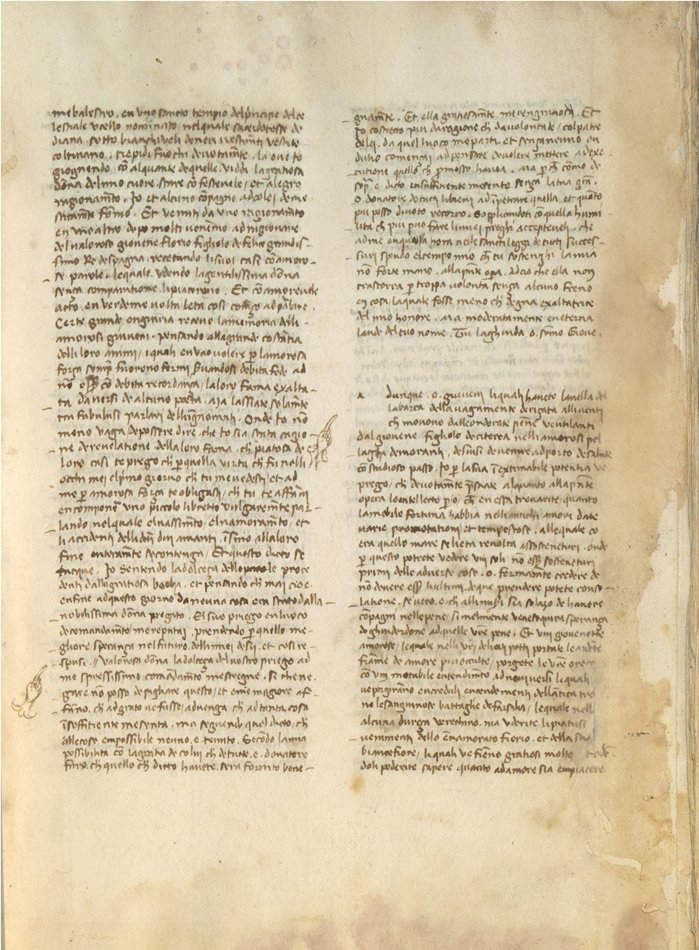
Giovanni Boccaccio (1313-1375)
1456
Codex Manuscript Collection, Berlin Collection
A contemporary of Petrarch, Giovanni Boccaccio was one of the greatest early Florentine authors. His Decameron and Il Filocolo were among the most read and celebrated works during the Renaissance, and influenced Chaucer. Writing in vernacular Italian, his texts were accessible to Florentines beyond the humanist elite. Il Filocolo, written between 1335 and 1336, is a prose romance following two lovers, which pays homage to Virgil. This volume contains marginal notes written by a Renaissance reader.

Poggio Bracciolini (1380-1459)
ca. 1485
Codex Manuscript Collection, Berlin Collection
Poggio Bracciolini was an early Italian humanist, a student of one of Petrarch’s friends. An avid book-hunter, he combed through remote libraries and rediscovered many ancient authors including Lucretius, Silius Italicus, and Quintilian. Poggio was friends with Lorenzo Valla for a time, but they quarreled over points of grammar and style. This volume of Poggio’s orations ferociously attacks Valla’s Elegantiae Linguae Latinae, a step in one of the fifteenth century’s most famous humanist feuds.
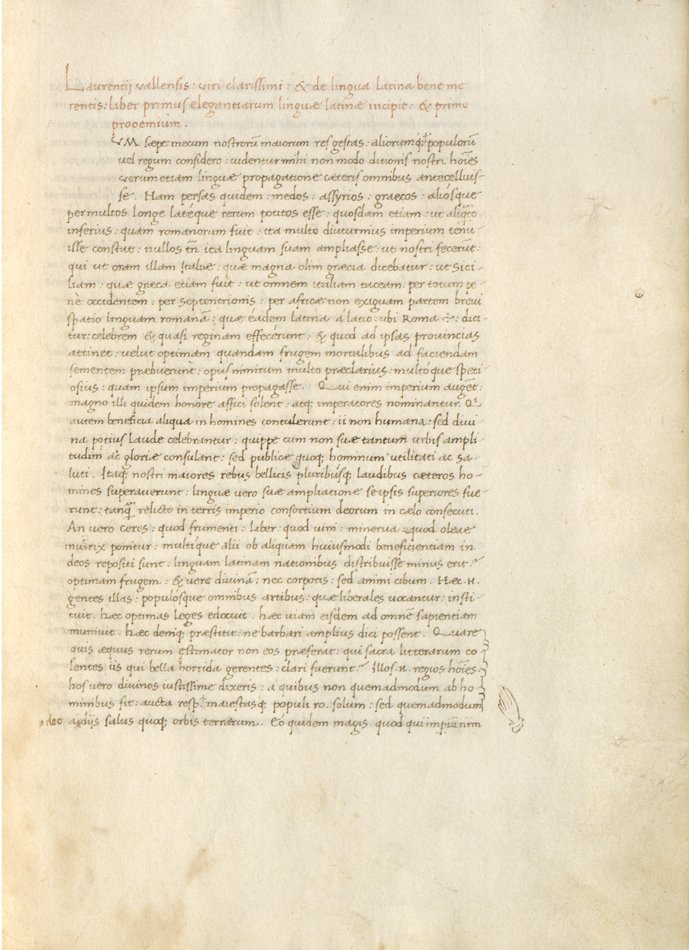
Lorenzo Valla (1407-1457)
ca. 1460
Codex Manuscript Collection
Humanists strove to develop a classical Latin style distinct from what they saw as degenerate Medieval Latin. While early humanists took Virgil and Cicero as absolute models, the pugnacious Lorenzo Valla insisted that not even Cicero himself was always perfect, and that the best Latin should be based on diverse examples from many authors. Valla’s ambitious Elegantiae Linguae Latinae traces the history of Latin, and declares that Rome was not lost, but survives in the many nations of Renaissance Europe.
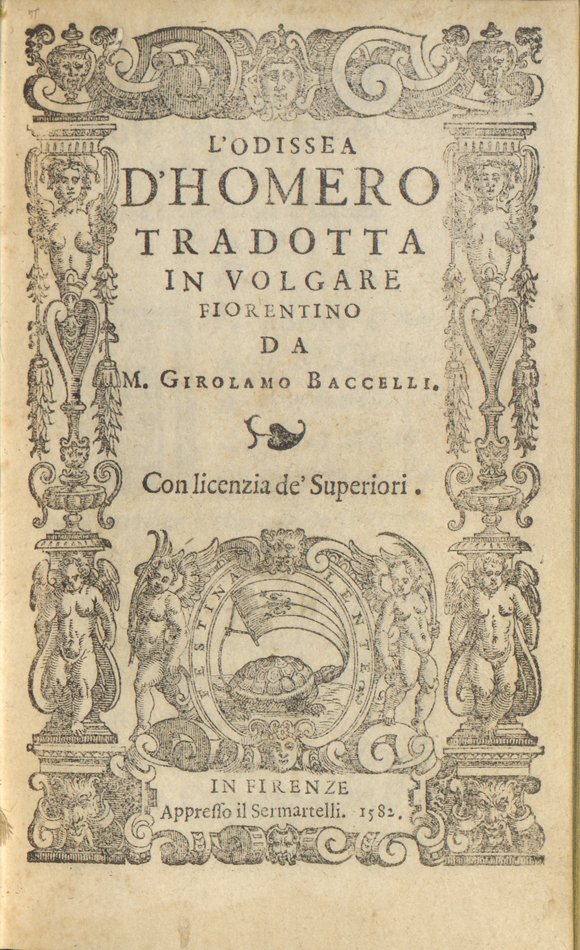
Homer
In Firenze: Appresso il Sermatelli, 1582
Rare Books Collection, Bibliotheca Homerica Langiana
Girolamo Baccelli (1514-c.1581) produced the first complete Odyssey printed in Florentine Italian. Its opening dedication to the second Grand Duke of Tuscany, Francesco I de Medici is indicative of the close relationship between classical study and the permeating network of patronage within social circles of the elite during this period. The patronage of the elite is a driving force for the dissemination of humanism. The printer’s device on the title page borrows the Latin motto festina lente (make haste slowly) used by the celebrated Venetian printer Aldus Manutius, but makes the words Florentine by having the turtle carry Florence’s symbol, the fleur-de-lis.
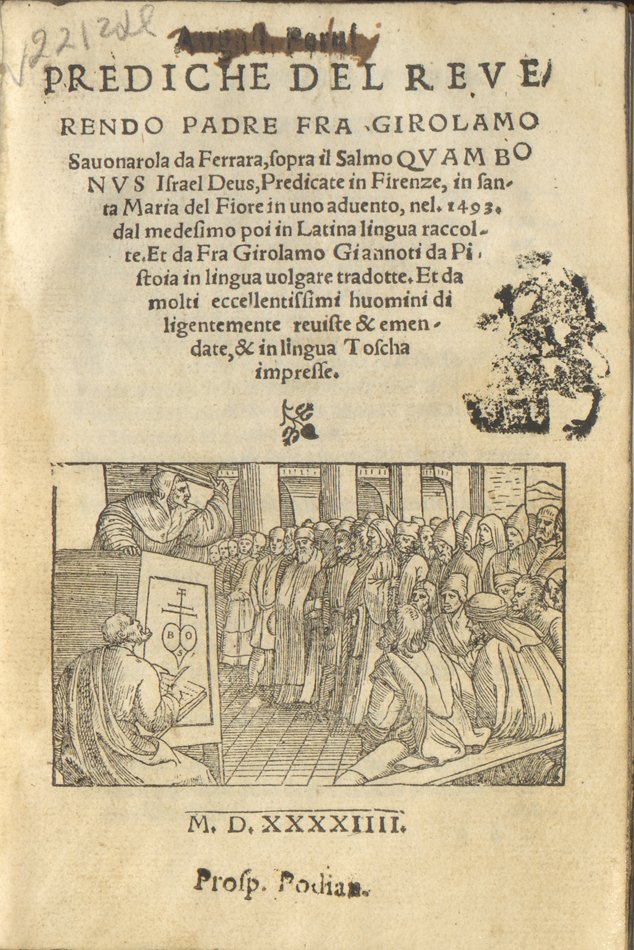
Girolamo Savonorola (1452-1498)
Vinegia: Per Bernardino de Binoni Milanese, 1544
Rare Books Collection
The firebrand Dominican reformer Girolamo Savonarola personifies Church tensions with humanism. When the French invaded in 1494, the Medici abandoned the city, but Savonarola persuaded the French to spare Florence and became the city’s ruler from 1494-98. A scholar himself, Savonarola debated with local humanists, and preached against paganizing literature and art. Books and paintings were probably burned on Savonarola’s infamous Bonfire of the Vanities, along with luxurious clothing, cosmetics, wigs, and pornography. Savonarola’s extremism brought the pope’s wrath down on Florence, and he was burned at the stake in 1498. This posthumous collection of his sermons shows how his reform message gained new momentum in the Reformation.
